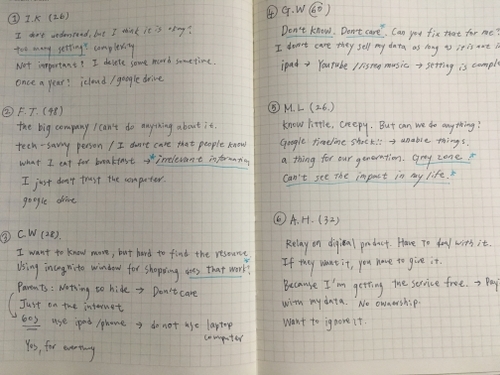
Memory.zip is a series of speculative services designed to playfully stimulate the awareness of digital traces.
Through using the service, people can learn how digital traces capture our daily life. The goal of the Memory.zip is to help our generation to feel more confident to talk about these traces and retain control of them.






With the goal in mind, my hypothesis is that people know where to find the information, but is the lack of engaging experience discourages people to know more. After interviewing and case studies, I found the best way to create an engaging experience for a serious topic is to use a speculative design approach and stretch the imagination of the users.




Through exploring a range of ideas through brainstorming, creating storyboards, and conducting workshops, I set off to create a series of speculative design services. Every service would have a personalized outcome generalized by digital traces for people to share. Using speculative design as a medium allows us to tell the story in a more conversational and lighthearted voice.



To begin, Memory.zip homepage introduces the users to the purpose of the services and gives them a quick overview of what the final outcome will be. The users then have the chance to choose one of the three services to start with. The service is simulated as a regular website, the user can generate their personalized product throughout the process.



While the users are learning more about the service, the system asks them to share some part of their digital traces to complete the process. The users may agree or disagree with the sharing. Base on the decision, the service will provide different tips for the users to consider.




After the experience has ended, people can still use memory.zip to stay tuned for the lasted tips and changes.